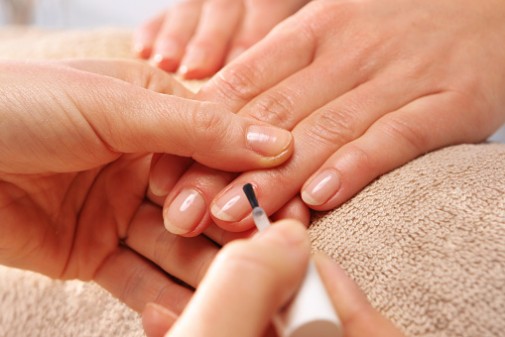Common ingredient in nail polish may be harmful for women

A study conducted by Duke University and the Environmental Working Group found a common nail polish ingredient that might cause concern for women who paint their nails frequently.
In the small study, 26 women were asked to paint their nails using a brand of nail polish containing at least one percent of the chemical TPHP, or triphenyl phosphate. Researchers investigated this specific chemical, as it has been suspected to be an endocrine disruptor. Previous studies have shown that TPHP can cause reproductive and developmental irregularities, but it has only been proven in animals.
Researchers collected urine samples before and after the women applied the nail polish, and looked for the DPHP (diphenyl phosphate), which technically is created when the body metabolizes TPHP. Of the 26 participants in the study, 24 of them had an elevated level of DPHP in their urine just two to six hours after applying. After 10 to 14 hours went by, the DPHP levels in all 26 participants had risen nearly sevenfold, which suggested that over time, more TPHP entered the participants bodies and metabolized into DPHP.
“It is very troubling that nail polish being marketed to women and teenage girls contains a suspected endocrine disruptor,” said Johanna Congleton, study co-author and senior scientist for EWG, in a news release. “It is even more troubling to learn that their bodies absorb this chemical relatively quickly after they apply a coat of polish.”
Although the study was small, it raises the question about chemicals in beauty products and the effects they can have on women’s hormones and reproductive systems.
“Environmental chemicals and their effects on reproductive function have become a hot topic in the field of reproductive medicine,” says Dr. Shweta Nayak, an obstetrician/gynecologist who specializes in reproductive endocrinology. “In the last decade, several endocrine disrupting chemicals have been identified to affect abnormal ovarian function, miscarriages and female infertility.”
Although this study gives scientists a better understanding of chemicals in beauty products, Dr. Nayak says that women shouldn’t throw out their nail polish or stop using it yet.
“Environmental and genetic factors are still some of the main causes for women’s infertility, and there is still a lot more research that needs to be done to better understand why women are infertile or have miscarriages,” says Dr Nayak. “It would be interesting to see the cause of the chemical over a longer period of time.
Researchers agreed that due to the small sample study, people shouldn’t overly interpret the findings.
Related Posts
Comments
About the Author
health enews staff is a group of experienced writers from our Advocate Health Care and Aurora Health Care sites, which also includes freelance or intern writers.

















